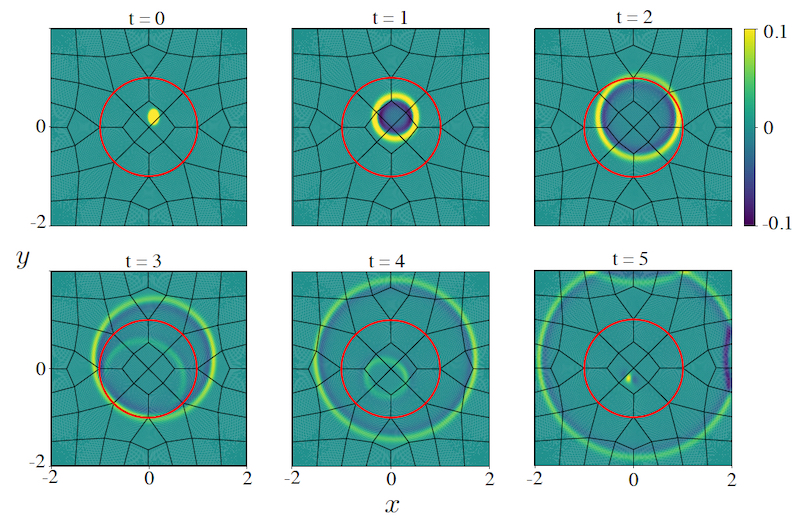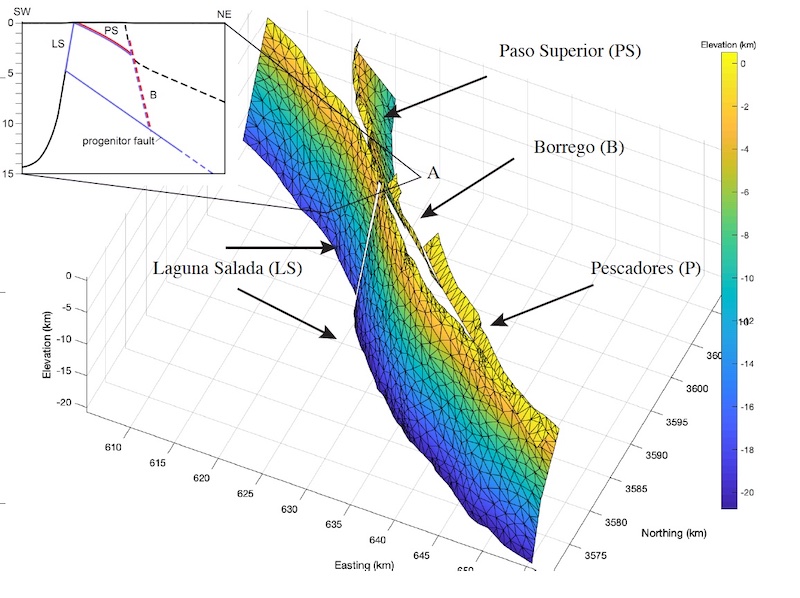I conduct research in computational mathematics and scientific computing with applications in the natural sciences. Specifically I develop high-performance methods for the numerical solutions to partial differential equations.
Software:
I maintain the Thrase project and Thrase.jl Julia package for simulating Sequences of Earthquakes and Aseismic Slip (SEAS).
Press:
- Article in Around the O, University of Oregon
- Article in Research & Strategic Partnerships: Quarterly Review, Portland State University
Below are some figures illustrating my research interests.
Wave-propagation and interaction with frictional interfaces (see Erickson et al. [JSC, 2022]):

Physical growth in hyperbolic systems modeling magma transport within a volcanic conduit as evidenced in continuous and discrete spectra (see Erickson et al. [JSC, 2019]):

Algorithms for computational plasticity involve problems in constrained optimization. We use these methods to illustrate how a fraction of tectonic loading is accommodated by off-fault plastic deformation over many earthquake cycles (see Erickson et al. [JMPS, 2017]):

Currently, our group is building high-performance codes for earthquake ruptures on such fault networks as those involved in the 2010 Mw 7.2 El Mayor-Cucapah earthquake (Marshall et al. [2017]). We are exploring the keystone fault hypothesis (Fletcher et al. [2016]) in which the earthquake nucleates on an unknown (progenitor) fault that pins the others in place until the whole network is primed to fail:

